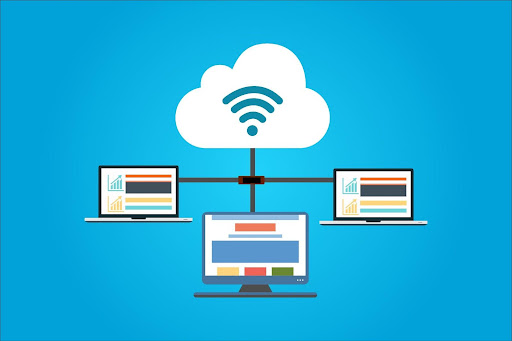For most IT managers, making purchase decisions is a delicate balancing act that requires careful consideration.
Project managers often find themselves grappling with several questions before pulling the trigger: Is this the best solution for us right now and long term? What is the total cost of ownership (TCO)? And how can we best project its return on investment (ROI)?
Of course, everyone wants to get the best value for their money. Such considerations become even more relevant when you realize IT purchases often come with hidden costs.
This post will examine six expenses hidden “under the hood” of IT products and services. We’ll also explore factors worth considering to avoid buyer’s remorse.
Factors That Influence IT Total Cost of Ownership
TCO is a metric that analyzes the financial impact of a purchase decision. It identifies all of the costs associated with owning and using a product or service over its lifetime.
TCO includes direct and indirect costs, such as acquisition, installation, operation, support, and disposal costs. TCO analysis is instrumental when evaluating high-value systems with a long lifespan and ongoing costs, such as security systems or workspace collaboration tools.
In recent times, IT managers have needed to calculate the TCO of running on-site systems versus that of cloud-based ones. As evidenced by a Microsoft Insight, they’ve often found that cloud-based infrastructure is less expensive than their on-premise counterparts.
Let’s examine the six elements that contribute to both model’s TCO:
1. Infrastructure Equipment

Operating an on-prem infrastructure often means incurring higher costs compared to cloud-based solutions. The expenses associated with acquiring and maintaining servers, storage devices, and networking equipment can be substantial.
Not only do these costs include initial investments, but they also involve ongoing expenses for maintenance, even if some equipment remains underutilized.
For instance, Company X may choose to operate an on-prem infrastructure, sparing no expense in acquiring the required equipment. For some time, its data needs would be less than its data capacity. Yet, Company X would continue to expend costs for maintaining both the functioning and non-functioning servers.
Not to mention that when the organization’s data needs eventually exceed its capacity, it will need to invest in acquiring more servers and integrating them with the existing system.
Cloud alternatives offer a more economical option as organizations only pay for what they use. They also don’t need to worry about acquiring and maintaining expensive hardware other than networking equipment.
Better still, cloud-based solutions are more scalable than on-premise options, making them cost-effective and more flexible than on-premise solutions.
While some IT admins often cite security concerns over cloud-based solutions, a Gartner study indicated that at least 60% fewer security issues will occur in public cloud service workloads than in traditional data centers.
2. Data Center/Hosting Costs

Data collected and used by organizations has to be stored somewhere. On-prem solutions demand physical space, either on-site or in leased commercial data centers. Scaling the on-premise infrastructure to accommodate business growth can lead to further costs, as additional hardware and resources need to be purchased and integrated.
For instance, if Company X chooses to operate an on-prem infrastructure, it would need to expend resources to get floor space either on-site or in leased areas in a commercial data center.
There are also ongoing expenses related to power consumption and regular maintenance. Throw in more variable costs of physical security, HVAC systems, and backup solutions, and you can see how the organization pays significantly more than the sticker price long term.
3. Software and Tooling
Organizations often rely on a variety of software solutions to address different needs within their IT infrastructure. However, managing a diverse set of individual software applications can lead to significant cost implications.
In an on-prem environment, each software tool typically requires separate licensing, maintenance, and support costs. As the number of individual software solutions grows, so does the cumulative cost of ownership.
Additionally, integrating and managing these disparate tools can become complex and time-consuming, requiring skilled IT staff and potentially leading to higher labor costs.
For example, Company X, running on-prem infrastructure, may invest in mobile device management (MDM), single sign-on (SSO), file sharing, and password management software individually. In contrast, Company Y may invest in a cloud operator integrating some of these technologies into its offerings.
In the long run, Company Y is likely to enjoy more services than Company X while benefiting from the integrated ecosystem that the cloud vendor offers from a single dashboard, and with fewer costs too.
4. Employee Devices

Whether operating cloud infrastructure or an on-premise one, employees need to use company-provided or employee-owned devices.
From smartphones to laptops and everything in between, employee-owned devices, or bring your own devices (BYOD), have become ubiquitous in the modern workplace.
While this trend has led to increased flexibility and reduced costs as organizations spend less on acquiring work devices, it can increase costs in other areas.
For example, if employees use their own devices for work purposes, the organization may need to purchase additional licenses for some software applications.
Furthermore, devices of different platforms like Android, iOS, etc., need to be configured to work with the organization’s network and security settings, which can add to increased MDM costs.
Fortunately, there are many ways to reduce the TCO of employee devices. One is to select the right mix of devices for your workforce carefully.
Another is to invest in cloud-vendor solutions like JumpCloud that provide mobile device management (MDM) and security solutions that streamline support and security operations.
As an example, consider two IT companies, ABC and XYZ:
ABC operates a BYOD policy and utilizes the services of a cloud operator that offers security and MDM capabilities across different device platforms. On the other hand, XYZ provides employees with company devices and operates on-site infrastructure while acquiring disparate security and MDM solutions.
Company ABC is likely to operate well on a lower budget than Company XYZ, which spends more on different cost headings.
5. Support, Labor, and Personnel
On-premise IT equipment is not particularly plug, play, and forget. They require constant monitoring and maintenance that is distinct from their day-to-day use. Hence, organizations need to hire new staff or train existing personnel to support their systems and keep them in good shape.
Ultimately, this increases the TCO of the system as organizations need to pay more salaries and training fees. The time spent in maintaining this infrastructure also amounts to cost as the IT staff could have put the time to other purposes.
By contrast, cloud-based infrastructures don’t require extensive maintenance, and they often include support services as part of their package.

6. Data Onboarding and Migration
Data onboarding and migration from on-premise infrastructure to a cloud-based platform can be disruptive to business operations. This is due to systems being taken temporarily offline for the transfer to take place. The longer the migration process takes, the more costly the downtime becomes.
Data validation and quality assurance efforts during the migration can require additional resources, such as specialized tools, adding to the overall migration costs.
However, cloud-based solutions are often more reliable in the long term. They also offer better uptime than on-premise infrastructure.
The increased uptime is because these solutions are not reliant on a single point of failure. In other words, if one component of the system goes down, the others can pick up the slack.
This redundancy ensures that businesses can remain operational even in an unforeseen outage. Moreover, cloud providers often have experts dedicated to guaranteeing that their systems are always up and running.
Hence, the minor hiccups encountered during migration to a cloud platform would amount to a lower TCO and a small price to avoid the costly downtime attendant with on-prem infrastructure.
Overcome Sunken Costs by Embracing the Future
It’s understandable to feel hesitant about leaving behind on-prem equipment, especially when you have already invested substantial resources into building and maintaining it.
However, clinging to outdated infrastructure solely due to past investments may lead to even greater challenges and expenses in the long run. As on-premi equipment ages over time, it becomes more susceptible to maintenance issues, inefficiencies, and reduced performance.
The cost of maintaining aging infrastructure can quickly escalate, eroding any perceived benefits of sticking with familiar but obsolete systems.
While the transition to the cloud may seem daunting, it’s a strategic move that will ultimately drive down costs and improve efficiency. Waiting too long to make this shift can exacerbate the challenges posed by aging on-premise equipment.
Reduce IT Costs with Tool Consolidation
If you’re still operating on-premise, it’s time to embrace the future and migrate to the cloud while consolidating your IT tools. Understand your total cost of ownership (TCO) better, reduce IT expenses, and embrace the future of IT with JumpCloud.
JumpCloud provides you with access to a comprehensive IT platform, enabling you to centrally manage and secure identities, devices, and the resources your people access every day. With JumpCloud’s tool consolidation capabilities, bid farewell to redundant systems and welcome a streamlined, cost-effective cloud-based solution.
Explore JumpCloud’s array of features at your own pace, from user identity management to device control and resource access. Each step of your tool consolidation journey will lead you to enhanced efficiencies and reduced costs.
Ready to experience the benefits firsthand? Sign up today to start your free trial of the JumpCloud Directory Platform.





